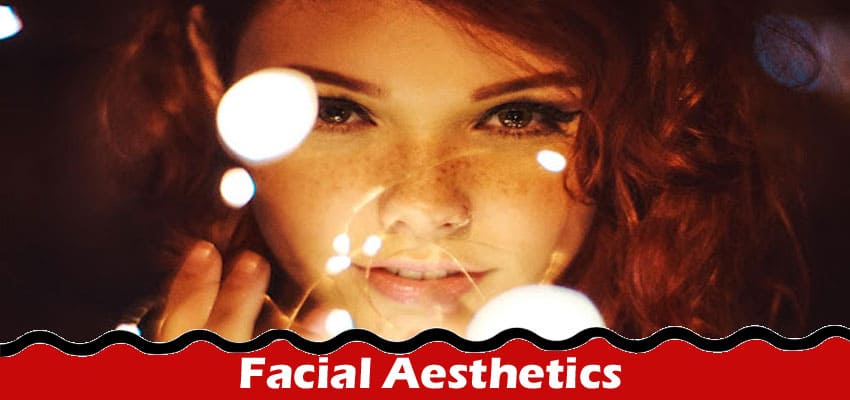Dermatology, the medical specialty focusing on diagnosing and treating skin conditions, has expanded its scope to include “facial aesthetics.” This emerging field combines medical expertise with cosmetic procedures to enhance the appearance of the face and address aesthetic concerns.
This essay explores the emergence and significance of facial aesthetics within dermatology. It highlights its benefits, popular procedures, ethical considerations, and the importance of specialized training in delivering safe and effective treatments.
The Rise of Facial Aesthetics
In recent years, individuals have been growing interest in improving their facial appearance. The face plays a significant role in personal identity and self-confidence, and people are increasingly seeking non-invasive and minimally invasive procedures to enhance their facial features, reduce signs of aging, and achieve a more youthful appearance.
Dermatology, with its deep understanding of the skin and expertise in diagnosing and treating skin conditions, has naturally evolved to include facial aesthetics as part of its comprehensive care approach.
Benefits of Facial Aesthetics Within Dermatology
The integration of facial aesthetics into dermatology brings several benefits. Dermatologists possess extensive knowledge of facial anatomy, skin health, and the effects of various treatments on the skin. This expertise allows them to offer safe and personalized cosmetic procedures.
By combining medical science with aesthetic principles, dermatologists can address both the medical and aesthetic aspects of patients’ concerns, providing holistic care and improving overall well-being.
Popular Facial Aesthetic Procedures
Facial aesthetics encompass a range of procedures aimed at rejuvenating and enhancing the appearance of the face. Some of the most commonly performed procedures include:
Botulinum Toxin Injections (Botox)
These injections temporarily relax facial muscles, reducing the appearance of dynamic wrinkles, such as crow’s feet and forehead lines.
Dermal Fillers
These injectable substances add volume to areas of the face, filling in wrinkles, lines, and hollowed contours. They can also be used to augment lips and restore facial harmony.
Chemical Peels
These treatments involve the application of a chemical solution to the skin, exfoliating the outer layer and stimulating collagen production, resulting in smoother, rejuvenated skin.
Laser Treatments
Laser technology targets specific skin concerns, such as pigmentation irregularities, scars, and fine lines. Laser treatments can also promote collagen production and improve skin texture.
Microdermabrasion
This procedure exfoliates the skin using a gentle abrasion technique, revealing a fresh, renewed complexion and promoting cellular turnover.
Ethical Considerations in Facial Aesthetics
While facial aesthetics offer numerous benefits, ethical considerations must be prioritized. Dermatologists must ensure proper patient selection, conduct thorough consultations, and educate patients about the potential risks, benefits, and limitations of procedures.
Managing patient expectations is crucial to avoid unrealistic goals and dissatisfaction. Maintaining integrity and prioritizing patient safety, well-being, and informed consent is essential throughout the treatment process.
Specialized Training and Expertise
Dermatologists must acquire specialized training and expertise in this field to provide safe and effective facial aesthetic treatments. Continuing medical education, workshops, and hands-on training are essential to stay updated with the latest advancements, techniques, and safety protocols.
Dermatologists need a thorough understanding of facial anatomy, injection techniques, and the use of cosmetic products to ensure optimal outcomes and minimize risks.
Collaboration and Multidisciplinary Approach
Facial aesthetics often involve collaboration with other specialists, such as plastic surgeons, ophthalmologists, and dentists, to address complex facial concerns comprehensively. This multidisciplinary approach ensures that patients receive the most suitable and integrated treatment options, combining surgical and non-surgical procedures when necessary
The Emergence of Medical Aesthetics
The rise of medical aesthetics can be attributed to multiple factors, including technological advancements, increasing patient awareness and demand, and the desire for overall well-being.
Patients today seek healthy skin and desire to enhance their appearance, boost self-confidence, and slow down the visible signs of aging. As a result, dermatologists have adapted their practices to include a range of non-invasive and minimally invasive cosmetic procedures.
The Importance of Facial Aesthetics in the Feild of Dermatology
The integration of facial aesthetics within dermatology has revolutionized patient care by providing comprehensive solutions to address medical and aesthetic concerns. With their in-depth knowledge of the skin, physiology, and pathology, dermatologists are well-positioned to deliver safe and effective facial aesthetic procedures.
By offering a range of non-invasive and minimally invasive treatments, dermatologists contribute to improving patients’ self-esteem, confidence, and overall well-being. Moreover, facial aesthetics have gained popularity due to the increasing demand for facial rejuvenation and enhancement. Patients seek procedures that can reduce signs of aging, improve skin texture, and restore facial harmony.
Dermatologists play a pivotal role in meeting these demands, offering treatments such as botulinum toxin injections, dermal fillers, chemical peels, laser therapies, and microdermabrasion. When performed skillfully, these procedures can yield natural-looking results that enhance patients’ appearance without compromising their unique facial characteristics.
Conclusion
The presence of facial aesthetics within the field of dermatology has transformed the way patients can enhance their facial appearance. Dermatologists’ expertise in skin health, combined with their understanding of aesthetic principles, enables them to deliver safe and personalized treatments.
By incorporating facial aesthetics into their practice, dermatologists provide holistic care that addresses both the medical and aesthetic aspects of patients’ concerns, ultimately improving patients’ quality of life and well-being.
Furthermore, In the ever-evolving field of dermatology, the acknowledgment and inclusion of facial aesthetics mark a significant advancement. As dermatologists continue to merge medical expertise with cosmetic procedures, they are better equipped to meet the desires and needs of patients seeking facial rejuvenation and enhancement.

